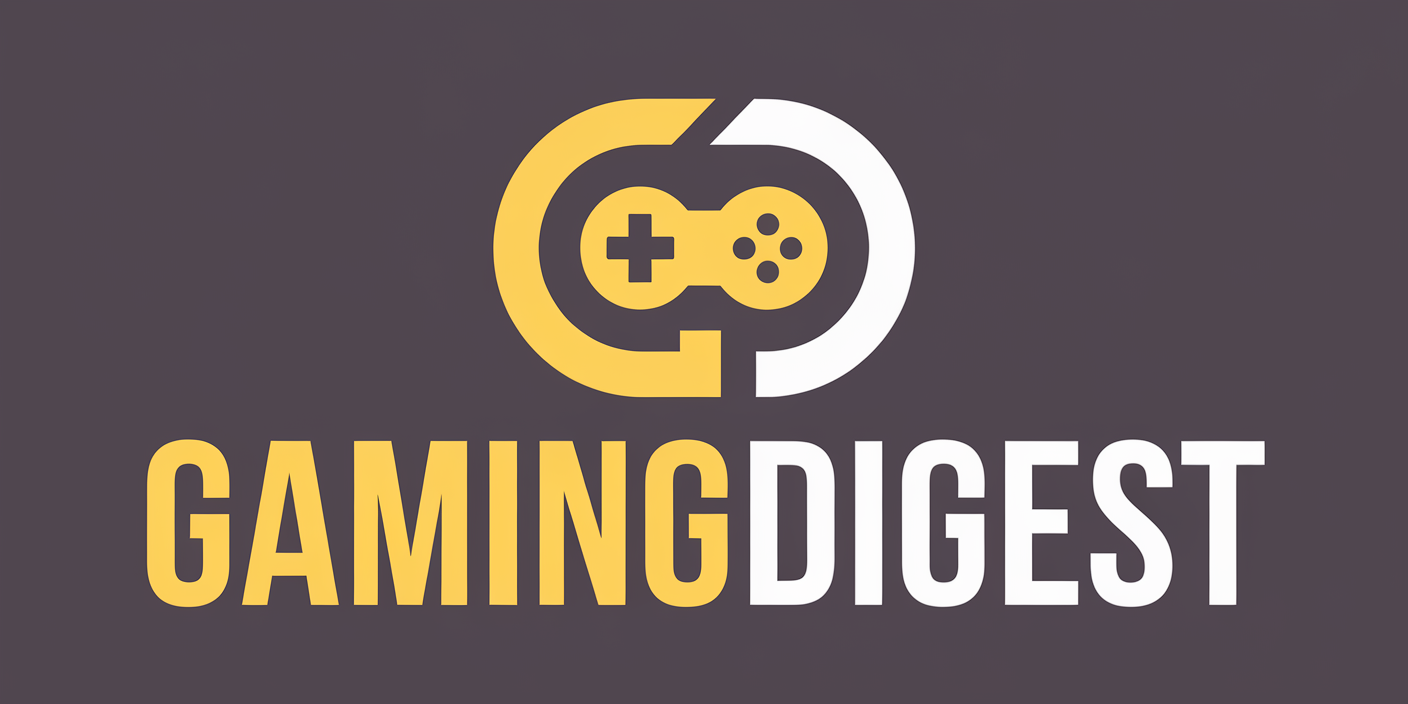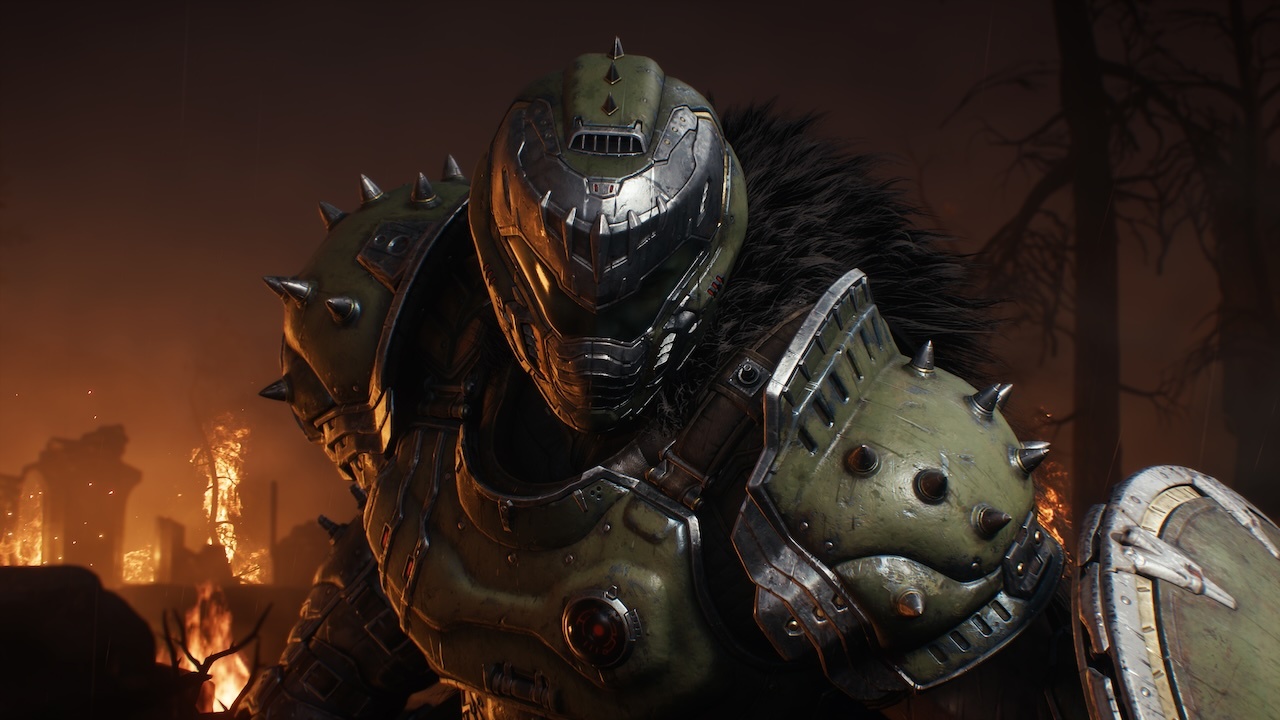Doom Eternal built upon the strong foundations that the series’ 2016 reboot established, evolving the classic and frenetic first-person action by introducing a complex layer of strategy and quick decision-making. It was a change that, while popular, did alienate some players looking for something akin to its more straightforward predecessor, with its emphasis on consistent movement, resource juggling, and frequent weapon switching, all of which could detract from the core principles of gratuitous demon slaying. As a response to that, Doom: The Dark Ages doesn’t retreat backwards, but instead threads the needle by reestablishing an engrossing power fantasy with simple but satisfying mechanics that push its combat into uncharted territory for the series.
Doom: The Dark Ages puts a big emphasis on standing your ground in a fight, rather than moving around it. To do this, you’re permanently equipped with a shield that lets you parry enemy attacks and block incoming damage. It’s a versatile tool that soaks up damage or redirects it with timely blocks and parries, giving you the ability to go toe-to-toe with far more enemies than before. In typical Doom fashion though, the best defense is often also an incredibly aggressive offense. Your shield is far more than a means to defend yourself–it’s a weapon in every sense of the word. When you’re not slicing a demon’s head off with its chainsaw edges, you can bounce it between enemies or shatter armor that has been super-heated by your bullets. It’s a great tool for closing distance, too, since it substitutes Eternal’s air dash for a long-reaching shield bash that comes in handy across the larger battlefields. The shield locks onto distant targets and at the press of a button the Slayer launches towards enemies and obliterates them with devastating effect. For a series so hyper focused on its array of weaponry, it’s curious to have the biggest change come in the form of a defensive addition. But with the variety the shield alone adds to the existing formula, it’s an addition that will be difficult to move on from.
You’ll still have to manage how you kill demons in order to keep your health and ammo topped up, but the importance of this has been de-emphasised when compared to Doom Eternal. Instead, that focus shifts towards a rhythm that arises from balancing parries and melee attacks in equal measure. You’re given powerful attacks that you can deliver routinely with your fists and other melee weapons, all of which are tied to refresh timers that you can shorten by parrying incoming attacks. It’s deeply satisfying to rush into the face of a towering demon with a shield bash, parry a string of attacks, and then deliver a flurry of your own in their dazed state. Each reverberating parry and subsequent crushing counter-attack pauses the action ever so slightly to emphasize the impact of your actions, giving each skirmish a crunchy feel that never gets old.
The heft behind your strikes is accentuated by the sheer physicality of the Doom Slayer this time around. This unrelenting force has always looked and felt like an unstoppable killing machine, but The Dark Ages leans further into this by showing you just how much of a physical presence you command on the battlefield. Each jump down from a ledge is accompanied by an earth-shaking thud, turning nearby enemies into bits and pieces in a violent rendition of a superhero landing. It’s immensely satisfying to announce yourself like this at the start of a larger fight, with the hordes in formation ahead of you almost visibly quivering in fear. This does mean, however, that movement feels slightly different too. You no longer get a double jump or air dash, further incentivizing you to pick your battles and stand your ground until it’s done. That doesn’t mean The Dark Ages is slow by any means, however. Doom has always been about blowing away enemies and quickly flicking your aim to take down the next, and The Dark Ages maintains that frenetic feel. It’s just noticeably slower than that of Eternal, which can take a moment to adjust to, but feels perfectly tuned for the new tools you’re given to play with in combat.
It takes some time for all of these changes to start to click together, which can make the first hour or so of The Dark Ages feel uneven. The opening handful of chapters do a good job of slowly drip-feeding you each new mechanic, but it ends up breaking the pacing severely when the action is paused routinely by a new tutorial blurb to read. It also takes some time for all your new abilities to start coalescing, which only really started once I had purchased some upgrades for my weapons that helped them synergize in devastating ways. The eventual payoff is worth the wonky first steps though. Doom: The Dark Ages fully realizes its power fantasy when you start blowing away enemies without a sweat that were giving you some slight hassle just a handful of hours ago, letting you revel in the ways you’ve enhanced your abilities and weaponry with each passing encounter.

Doom: The Dark Ages doesn’t toss aside the series’ heritage in favor of its newly discovered love for melee combat. Its vast array of weapons bring back series favorites and intelligently twist some staples for more era-appropriate substitutions. It’s still as fun as ever to blow demons away at close range with the Super Shotgun (which finds new life in a Doom that’s all about getting in the face of your foes), but it’s the newer additions that I consistently found myself gravitating towards for a balance of fun and utility. One of my favorites is a railgun-equivalent rifle that fires a cannon ball attached to a chain, decimating armored enemies with seismic impact. Another literally chews up skulls and spits out the bits of bones as bullets, which translates into a rapid-firing gatling gun that’s great for controlling groups of demons. The Dark Ages’ weapons are rooted in the medieval-themed period you find yourself in, changing their behavior just enough from weapons you might already be familiar with to make using them fresh and exciting again.
Another way that The Dark Ages’ immerses you in its new time period is by letting you loose on its world with much larger, open-ended levels to explore. These hubs have multiple objectives for you to complete as well as secrets and challenges to undertake, but they let you choose the order and pace at which you want to tackle them. It feels like an extension of the linear yet secret-laden levels of both the 2016 reboot and Eternal, except there’s a lot more to find and more ways for things to be hidden. Many of the highlights appeared in the new Cosmic Realm, an entirely new setting for Doom that draws from its Lovecraftian roots to create some memorable side content. None of these hubs feels too large or empty, consistently filling their large spaces with battalions of demons to get into messy skirmishes with. They’re also well-balanced, with more linear spaces you’ll be funneled through, giving the extensive 22-chapter-long campaign a good dose of variety.
The Dark Ages falters when it strays away from these tightly tweaked fundamentals. Among the mix of linear and larger stages, there are a handful of instances where you either pilot a giant mech for climactic kaiju-like fights, or traverse a large battlefield on the back of an armorclad dragon with energy wings. While both are introduced in memorable ways, they lack depth to their action. Each instance, whether it’s in the mech or riding atop the dragon, boils down to seeking out enemies and engaging in slow, drawn-out fights where you trade blows between timely dodges. These encounters feel ripped out of an entirely different game when compared to the beautifully balanced combat while on foot, and just make you long to get back to that.


Similarly, Doom: The Dark Ages fails to tell a captivating tale with its shift towards cinematic storytelling. It’s easier to follow now that there are characters to put names to and events unfolding in front of you rather than through codex entries like games prior, but there’s not much beyond the war that’s waged at the game’s opening and where it leaves things by the end. It’s a far cry from the tone of the 2016 reboot and more in line with that of Eternal’s seriousness, never paying off some of the questions it poses about the Slayer and his role in this conflict at the start. There are, however, some standout moments, particularly when some unexpected liberties are taken with the Slayer as a character. These thankfully don’t fall into the trap of trying to tie some larger mythos to a character that is barely more than an avatar for the game’s violence, but they do call back to some of the best moments in the reboot that should put a smile on your face.
It’s surprising how much Doom: The Dark Ages manages to reign in some of the changes Doom Eternal made while also taking the series in a wholly new direction that redefines its rules of engagement. The emphasis is on melee combat that harmonizes beautifully with the tried-and-tested pace of Doom’s action, making each new attack parried and counter-attack landed feel as satisfying as the first. It’s a finely tuned adventure that delivers the power fantasy of ripping and tearing through thousands of demons without losing an underlying complexity that makes each encounter engaging to blast through. Although it can falter at times when straying too far from the fundamentals, Doom: The Dark Ages shows that there’s still so much fertile ground that this series can explore, and that sometimes smart, measured changes can take the series in surprising new directions and yield some of its finest moments.









